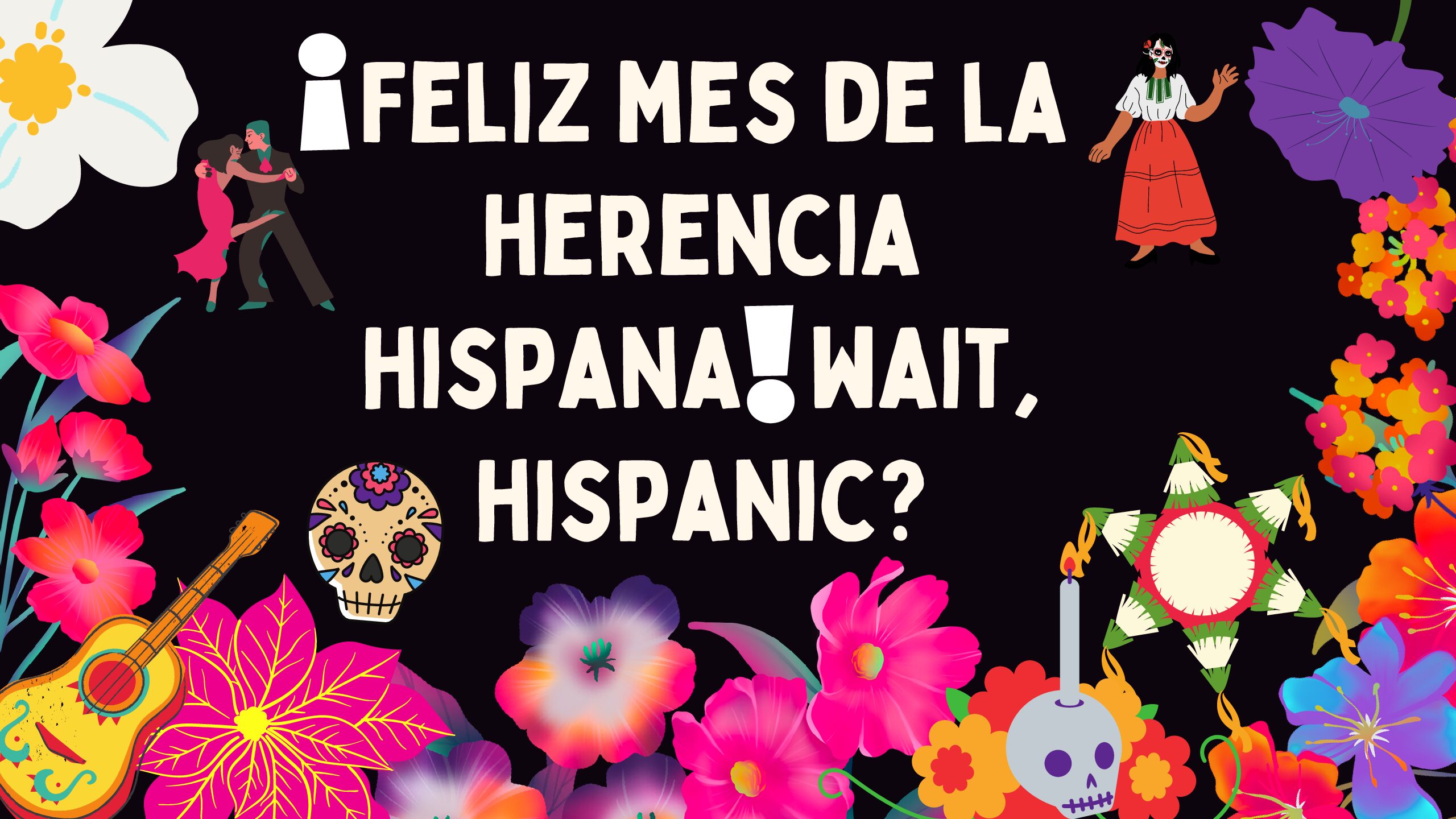By: Michaela Gonzalez, Staff Writer
¡Feliz Mes de la Herencia Hispana! From September 15th-October 16th, us Americans celebrate the beautiful histories, cultures, and art forms of Mexico, Spain, South America, and the Caribbean. It kicks off with the day Costa Rica, El Salvador, Guatemala, Honduras, and Nicaragua declared independence from Spain on September 15th. Then it continues throughout the appropriate month with the independence day of Mexico (September 16th, 1810 from Spanish), Chile (September 18, 1810 from Spanish), and Belize (September 21, 1921 from Britain). It was first signed into law only as a week in 1968 by Lyndon B. Johnson, then about 20 years later on September 14th 1989, George H.W Bush extended the week to a month/ 30 days. Ever since, each sitting president makes National Hispanic Heritage Month proclamations annually.
Now, who exactly are “hispanics?” It directly translates from the Spanish word “hispano” which means a person who culturally originates from Spain. With this, it discredits centuries of accomplishments and foundations latinx ancestors built pre-Spanish colonization of the Americas. It also categorizes 62 million people from culturally distinct countries into an umbrella term which, in essence, is referring to them as descents of Spanish history and lifestyle. To quote Paul Ortiz, author of An African American and Latinx History of the United States has claimed, “It wasn’t a natural fit for anyone that I knew. I didn’t know anyone growing up who said, ‘Oh, hey, I’m Hispanic.’ It was always either, I’m Mexican, Mexican-American, Chicano or Chicana.” Chileans are different from Paraguayans, Argentinians are different from Columians, Guatemalans are different from Mexicans, and so on. Although all of these regions assign Spanish as their official language, besides Brazil, they also have indegnious languages that are being erased due to Spanish colonization. For instance, 4.8 million people speak Guarani in Paraguay. But having the everyday knowledge when we refer to a Hispanic person, we instantly think of them to speak their colonized language, essentially because it is quite literally in the name.
The term “hispanic” is rooted from the U.S census, and figuring out how to properly identify Latin Americans, but ended with the grouping of several uncommon cultures; their only similarity being they were colonized by Spain. In fact, before 1970, when they added “Puerto Rican, Cuban, Central and South American, and other Spanish” as options, Latin Americans were assigned as “Mexican” by the U.S Census Bureau. This led to a gigantic misrepresentation of the correct Latinx population in America, and igntiting much confusion to whites and non-whites, further appropriating the known stereotype that all Latinxs are Mexican. Unfortunately, this label has been used as an identity for about 50 years, so there is no possible way to erase it soon. But, with the rising popularity of overdue gender inclusivity, the term “latinx” has become a more favored alternative from “latino” or “latina” (when addressing a woman). This is because in Spanish there are only masculine (-o) and feminine (-a) subjects, no neutral. With no neutral term, we can cannot respectively include many members of the LGBTQAI+ community, such as gender non-conforming people.
Regardless of how we address this specific community, we need to honor them, as this is the purpose of the month after all. As president of 1968, Lyndon B. Johnson stated, “The people of Hispanic descent are the heirs of missionaries, captains, soldiers, and farmers who were motivated by a young spirit of adventure, and a desire to settle freely in a free land.”Also living in California, we need to appreciate and preserve how our cities deeply revolve around Latinx culture. The culture is ingrained within us, seen most clearly within the names of our cities. California was part of Spanish territory along with Mexico until 1821, and San Francisco itself was founded by a priest and first named, “San Francisco de Asis”. Other cities all around this state were founded Spanish priests and are in Spanish such as San Jose (Saint Jose), San Bruno (Saint Bruno), Palo Alto (tall stick), Alameda (A tree lined street), San Diego (Saint Diego), Los Angeles (the angels), and Sacramento (sacrement). Although the European colonizers claimed and named these lands, it was the Latinx community that kept these cities prosperous for so many years. In the past, California has treated the Latinx very poorly. Mexican workers were consistently paid less than white workers. Lynchings were experienced during the Gold Rush. Migrant families struggled to survive during the Dust Bowl. Latinx families separated and detained at the Mexican-American border for no apparent reason besides American ignorance. With some of these issues presently still happening, the least we can do is inform ourselves about these problems and question why they happen instead of continuing to overlook them.
All in all, when looking beyond the argument over how to address this celebrated and strong group of people, we see how the Latin American community and their ancestors have changed, fought, and revolutionized America. We see their uniqueness and pride in their own culture, as well as their love for America. They are the uncelebrated heroes of American culture, invisible except to those who look for them, but it is time for change. We can’t just write them off as a group and acknowledge them once, then forget until the next year. They aren’t just a holiday or advertising point, they are a diverse people who stayed dedicated to our country. It is time we honor them.




